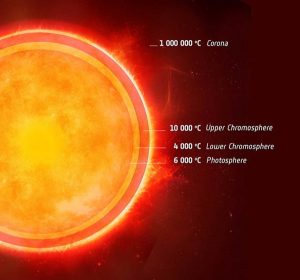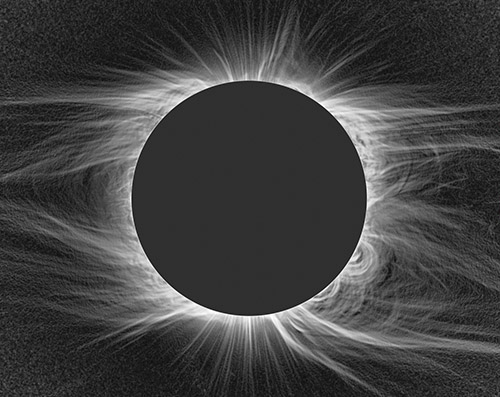The pressure and density in the corona is much much lower than in earth s atmosphere.
The solar corona has a temperature of more than a million kelvins.
This low density makes the corona much less bright than the surface of the sun.
The corona is about 10 million times less dense than the sun s surface.
Temperatures range from 1 7 million degrees f 1 million degrees c to more than 17 million f 10 million c according to the nso.
Mercury rotates slowly and has a thin atmosphere and consequently the night side temperature can be more than 1 000 degrees fahrenheit lower than the day side temperature shown on the diagram.
It has a temperature of approximately two million kelvins and an extremely low density.
The photosphere has a temperature of only about 6000 k.
The corona s high temperatures are a bit of.
This phenomenon is connected to.
The photosphere has a temperature of only about 6000 k.
At 1 500 kilometers the temperature starts to rise and by 10 000 kilometers above the photosphere the temperature reaches one million kelvins.
The solar corona has a temperature of more than a million kelvins.
The material in the corona is an extremely hot but very tenuous plasma.
Why isn t the corona significantly brighter than the photosphere.
The corona is incredibly hot hundreds of times hotter than the.
The solar wind which flows radially.
The corona has much lower density the sun rotates once every 25 days relative to the stars.
Why isn t the corona much much brighter than the photosphere.
The solar corona has a temperature of more than a million kelvins.
Corona outermost region of the sun s atmosphere consisting of plasma hot ionized gas.
It can be as cold as 290 degrees fahrenheit 179 degrees celsius on mercury at night.
The corona emits only x rays.
Between 1 500 kilometers from the top of the.
The magnetic field traps the light b.
The photosphere has a temperature of only about 6000 k.
Sunspots change in number and location during the solar cycle.
The solar corona has a temperature of more than a million kelvins.
The solar corona has a temperature of 1 million to 2 million kelvin.
Why is the corona so hot.
The magnetic field of the sun.
The photosphere has a temperature of only about 6000 k.
Why isn t the corona much brighter than the photosphere.










